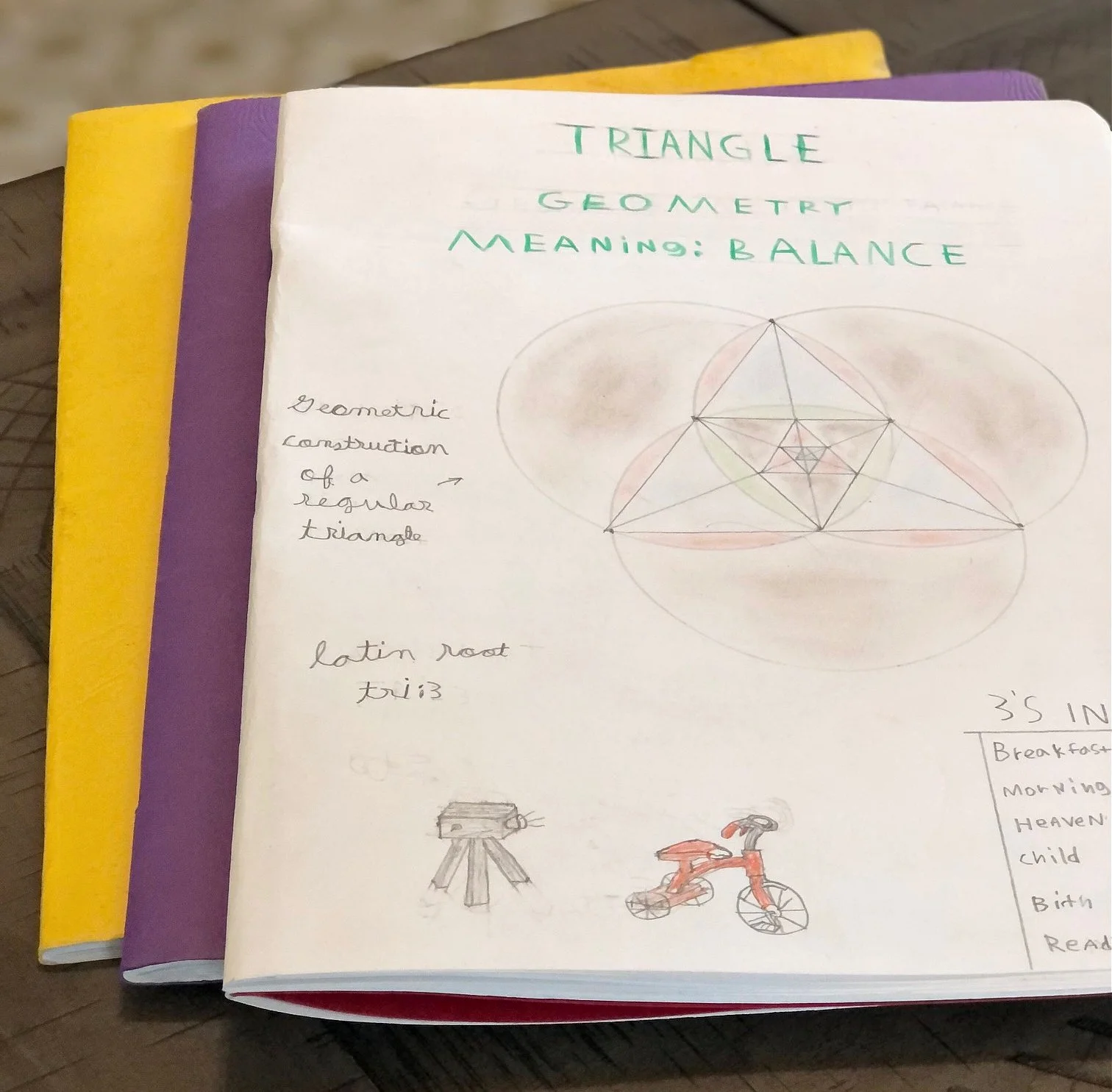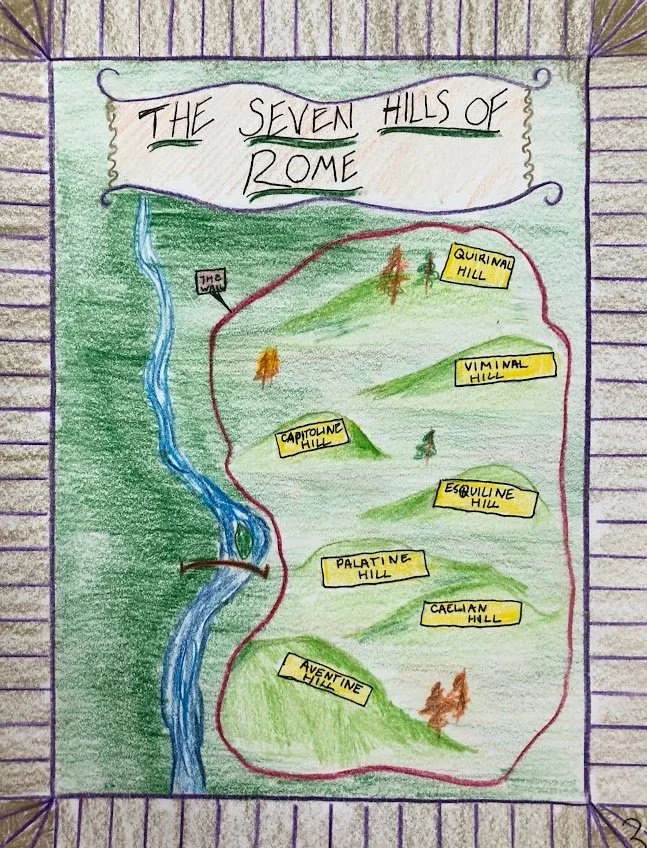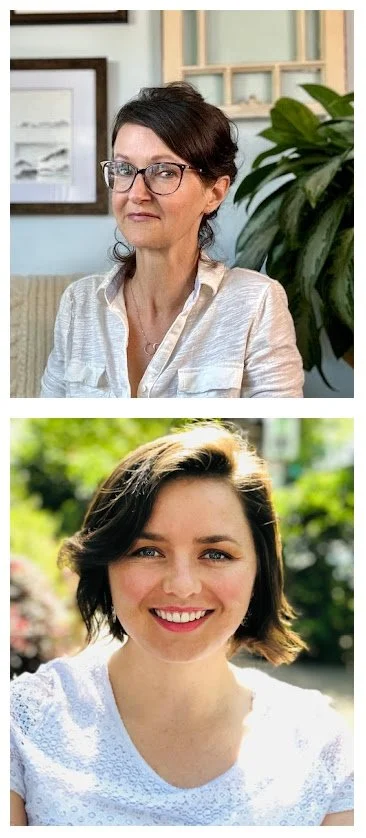What are Waldorf Main Lesson Books Used For?
Q: In Waldorf education, main lesson books are used throughout the grades as part of a student’s educational experience: what are they used for?
(This post is part of a series in which we answer the most common questions we receive in our inbox re: homeschooling, Waldorf curriculum/pedagogy, and whatever else comes our way! Click here to read more from the series!)
A: It is common to hear that Waldorf students “make their own textbooks,” which are called main lesson books. But, this image of “textbook” isn’t quite accurate.
A first grader’s main lesson book page from mathematics- “David Divide” sharing equally!
A Waldorf main lesson book does not show what a student will learn, it shows what a student has learned. The main lesson book is a tangible representation of a student's developmental and artistic growth, serving as a unique account of their educational journey.
They are a living record of the child’s development– they show what they have experienced, mastered and enjoyed!
A main lesson book is slowly built over the course of a block*, one page at a time with the guidance of the educator. Students don't just write in main lesson books; they illustrate, draw, and craft visual representations of the concepts they are learning. They truly are a product of art and academics integrating as one!
*What is a block, exactly? Waldorf education is often organized into blocks, where one subject such as History, Language Arts or Math, is studied each day for about three to four weeks. This structure encourages the student to progressively build up their understanding and mastery of a single subject, and a chance to really focus on and explore the curriculum.
A seventh grader’s geometry main lesson book- notice the customized details!
In the early grades (1-4), main lesson books often emphasize foundational skills. For instance, in mathematics, students may start with the basic concepts of numbers and counting, with corresponding illustrations to reinforce understanding, such as “Prince Plus” to represent the process of addition. In language arts, students may draw letters and images inspired by classic fairy tales, enhancing both writing and artistic skills.
A student’s main lesson book page from the sixth grade Roman History block- a strong border is a wonderful way to frame the page!
As students progress through elementary school, the complexity of their main lesson book entries grows as well, and the students’ individuality is expressed more and more. Science lessons may involve detailed drawings of plant life cycles or experiments, while history lessons might include detailed timelines with illustrations depicting key events.
Here are some examples of main lesson book page ideas across the grades:
A first grader’s drawing of the four processes (multiplication, addition, subtraction, and division) as four little gnomes during a Math block
A fifth grader’s illustration of the stages of a sprouting seed during a Botany block
A seventh grader using a compass and straightedge to recreate Leonardo da Vinci’s “Vitruvian Man” in the Renaissance block
An eighth grader creating a chart to show their observations of different sugar products during their Organic Chemistry block
A fourth grader writing a paragraph about a cuttlefish, to demonstrate their newfound ability to use adjectives and adverbs.
Our own Caitlin Amajor’s fourth grade animal report main lesson book page!
The possibilities are endless when it comes to creating main lesson books - and Waldorf schools, Waldorf educators, at-home educators, homeschooling groups, etc. all have their own methods, standards and approaches to creating them!
Overall, there is no wrong way to create a main lesson book- they are, in the end, a method for the student to actively show their educational journey through artistic and academic expression.
About the Authors
Robyn Beaufoy is Waldorfish’s CEO, and also a course instructor for Simple Season (coming soon!), Waldorf Art for Beginners, and Weekly Art Foundations. You’ll find her intuitive touches and influences throughout everything Waldorfish offers. Robyn has been in the world of education for over 25 years, with an MA in Education and a certification in Waldorf teaching - she also homeschooled both of her children for some of that time. In 2012 Robyn co-founded Waldorfish.com, creating it with the vision of making Waldorf inspired-art and pedagogy more accessible, joyful, and doable for homeschoolers all over the world.
Caitlin Amajor is Waldorfish’s course instructor for Geometry grades 5 & 6, and Botany, as well as our Administrative Assistant. From a young age, Caitlin has been immersed in Waldorf education, attending a Waldorf school from K-8. After receiving a BA in History, Caitlin gained her certification in Waldorf teaching, and spent seven years as a Waldorf class teacher in the upper grades. With a special fondness for watercolor painting and geometry, Caitlin loves bringing Waldorf education to her students all over the world, and seeing their own individuality and style bloom from the curriculum!




